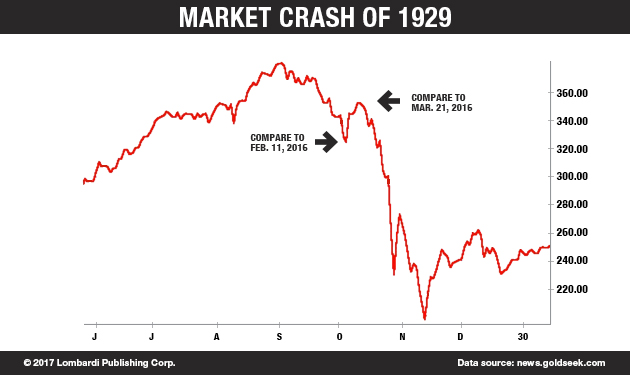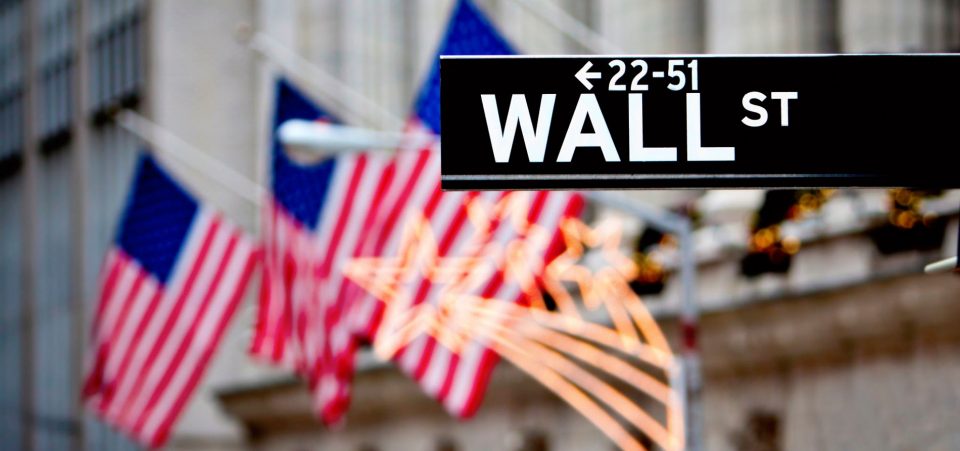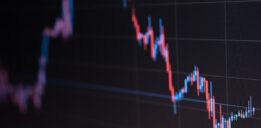Stock Market Crash Predictions
Is it possible to predict the things, ideas, inventions, or events that shape history? In that sense, imagine living at the time when humans discovered fire. Before that fateful observation, you can bet nobody had any clue that the natural environment had something so useful as fire to improve their existence. Such is the case with Wall Street and stock market crash predictions.
Still, hindsight—that is, history—can help identify the patterns that have produced major market events. Chaos theory suggests that no event results from the exact confluence of trials. But a study of past events can at least send us valuable warning signs. They can be “calibrated” to help investors interpret market signals like dashboard lights help drivers understand their car’s behavior. No wonder 1929 stock market crash simulation games are popular.
Sometimes those dashboard lights might point to a potential massive breakdown. But they won’t tell you when or where that breakdown will occur. You can guess, based on sensations you’re getting from the steering, the engine, and so on. But it’s a guessing game as to the very place the vehicle will quit. Understanding that would be great. It would prevent thousands of people from getting stranded on the side of the road.
More specifically in the case of future stock market crash predictions, the dashboards of wise investors will be flashing with warning lights now. One of the brightest warning lights will be pointing to the dangers of President Donald Trump’s deregulation plans.
History has shown that banking deregulation has been a major factor—perhaps the biggest factor—in weakening institutions and generating perfect storm systems that cause long-term crises. President Trump wants to dismantle the barriers that President Obama was forced to install in the wake of the 2008 financial crisis.
The Stock Market Will Crash in 2017
The stock market will crash in 2017. That is the message that deregulation sends. There’s no sneaking around the fact that deregulation would alter the current market dynamics. It would encourage more speculation, increasing the chances and magnifying the effects of an upcoming stock market crash. It doesn’t take a genius to make money when market bubbles are inflating.
In the late 1990s, the dot-com boom made many temporary millionaires. There was an easy formula. Affixing “.com” behind a company name was the equivalent of sprinkling a light drizzle of olive oil on a fresh salad. Pets.com is a classic example. The infamous company had an admittedly weird idea: offering a platform where people could buy and order pet food, to be delivered at their doorstep.
That’s not bad. After all, Jeff Bezos became a multi-billionaire and private space flight pioneer thanks to a website that sold products online. But relatively few people go to pet stores to buy pet food. With all of the fascinating offerings on the internet, pet food types hardly seem like the kind of topic over which to waste time in the wee hours of the morning.
Still, Pets.com splashed on the NASDAQ on February 9, 2000. It announced bankruptcy before you could order Fido’s special breakfast mix for New Year’s Day 2001. That crash happened not before Pets.com became wildly successful in the markets. Pets.com made its market debut at $11.00. It rose to $14.00 in weeks. And then it made a hard landing at $1.00/share.
This is not meant as an analysis of the dot-com bubble. Rather, investors should always remember the events leading to the rise and demise of Pets.com, Enron, Excite, VA Linux, and even Yahoo! Inc.(NASDAQ:YHOO), though its demise has been more drawn out. The lesson they impart is that equity investment is risky.
Investing in stocks is similar to a bet. It remains a bet when investors fail to consider the many factors that can go wrong and the few that go well. There are no guarantees that investors will even get their money back, let alone secure a return on the capital they have invested. Stock price trends are more unpredictable than not.
To reduce the risk, you can choose to invest in stocks with a high capitalization. Their prices generally make them more difficult to sway during major speculative movements. The traditional high-standing companies like General Motors Company (NYSE:GM), Ford Motor Company (NYSE:F), the big banks, or International Business Machines Corp. (NYSE:IBM) have made up the bones of many a wise investor’s portfolio.
Diversification is another hedge method, because even the established stocks can fail from time to time. Tesla Inc (NASDAQ:TSLA), an upstart electric car manufacturer just five or six years ago when it went public, now boasts a bigger market cap than General Motors or Ford. So, it’s best to distribute savings and resources over multiple stocks—and even across multiple markets. Indeed, there is a strong correlation between the shares that make up lists, like the S&P 500 and major markets themselves. If the S&P falls on Wall Street, more often than not, it also triggers a fall in London, Frankfurt, or Tokyo.
What Will Cause the Market to Crash in 2017?
The end of the eurozone, a possible nuclear attack of North Korea, or the collapse of the Chinese economy. These are the sources containing the black swans and catastrophic events that could crash the markets in 2017. Their probability is hard to quantify but these are events that investors should watch.
China is the world’s largest consumer of raw materials, including crude oil. China produces 15% of world GDP. Any hiccup in Beijing would blow the financial markets. Weakness in China—it could result from an escalation of the North Korean situation—would cause demand for raw materials to collapse worldwide, triggering a financial market collapse.
Trump’s protectionism is another trigger of bad financial omens. The rise of U.S. protectionism would affect trade worldwide. In the specific American case, the Trump plan could trigger a trade war with China and destroy existing trade alliances. Restrictions on global trade, unproven to bring back jobs in the U.S., would doubtless have a significant impact on world economic growth.
Financial deregulation is certainly one of the potential causes of stock market crash in 2017. It simply increases the risk of a new disaster. In a decree signed on February 3, President Trump gave Treasury Secretary Steve Mnuchin 100 days to offer make recommendations to amend the Dodd–Frank Wall Street Reform and Consumer Protection Act.
Nowadays, the finance and the exchanges it generates have a weight unmatched in the world economy with that of the production of goods. A figure can convince them: in 2008, world trade in goods and services amounted to $19.5 trillion. During the same period, financial market transactions amounted to $3.6 billion, or 200 times higher.
The U.S. Congress passed the Dodd-Frank Act in 2010 in the wake of the worst financial crisis since the stock market crash of 1929 and the Great Depression of the 1930s. The causes of a market crash such as the one that occurred in 1929 vary—evidently—from those that caused the crisis of 2008. But they have significant wider-ranging factors in common. It so happens that the markets in 2017 are running on an upgraded version of the same factors that caused the 1929 and 2007 crises.
Briefly summarizing the similarities of the two biggest financial crises of the past 100 years, the fact that both started in the United States is interesting. In both 1929 and 2007/2008, the financial crashes occurred after periods of stability. Employment was high as well in both periods, as were Price to Earnings ratios (P/E).

What Caused the Stock Market Crash of 1929?
The 1929 crisis will be remembered, together with the two world wars, as one of the most traumatic events of the whole twentieth century. On October 29 of that year, the collapse of Wall Street stock prices prompted a serious socio-economic crisis. The crash might be considered one of the very factors that contributed to the explosion of World War 2.
Indeed, one of the 1929 crash effects was the last major World War. But, one of the 1929 stock market crash causes itself happens to be a war as well: World War One. The First World War imposed government regulation on capitalist production to shift resources toward the military effort. After the war, businesses resumed to make what they wanted. They did so with exuberance, and so did the market traders. That led them directly to the 1929 crisis.

Following the stock exchange trading in 1929 and the 1932 banking crisis, the American administration launched several laws that prevented banks from speculating excessively. By doing so, they took too many risks with their clients’ money: investors and small businesses. That was the point of the Glass-Steagall Act of 1933.
Glass-Steagall was a crucial law that prevented commercial banks from using private deposits to invest in the financial markets. President Bill Clinton repealed Glass-Steagall in 1999. This deregulation blurred the line separating commercial from investment banking. Regulation has both advantages and disadvantages, as does deregulation.
Sometimes, they do make it easier for businesses to operate. But, as with the repeal of Glass-Steagall or the pre-1933 market regulatory mechanisms, deregulation can weaken the financial system and cause financial crises. Regulation acts as the vaccine to prevent certain viruses.
Deregulation Is the Common Denominator of Financial Crises
Clinton softened financial regulations in the 1990s. Now, Trump wants to leave his own legacy of deregulation. He wants to tackle the so-called “Volker” rule, named after the former president of the Federal Reserve, Paul Volker. This rule banned banks from speculating from their customers’ accounts. The rule also discouraged commercial banks from investing in hedge funds or private equity funds that invest in non-listed companies.
The Trump administration wants to weaken the powers of the Consumer Financial Protection Bureau (CFPB). This is the body that controls mortgages and credit cards. Before the financial crisis of 2008, these are the very financial products that were at the heart of the abuses, leading to the crash. The Republicans, however, claim that the CFPB is abusively restricting access to credit for U.S. consumers.
Such is the lesson to be learned from the last 100 years of financial history. The deregulation movement that has gained ground with Trump is not new. Clinton did it and so did Ronald Reagan. The movement started in the 1970s. Deregulation has allowed rich speculators to become richer. But, it has also contributed to the Middle Class’s demise.
Financial institutions left unchecked have always adopted opportunistic behavior. They speculate to the point of damaging average investors. The history of the 1929 stock market crash timeline still offers valuable points to consider when analyzing the current historical economic context. Those who understand it are better equipped to manage the risks of the markets today.






